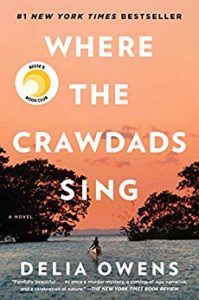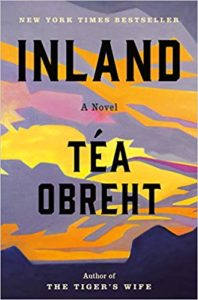Talking to Friends
In his new book, Malcolm Gladwell works with the stories of Bernie Madoff, Amanda Knox, Jerry Sandusky, Sandra Bland, Larry Nassar, and others. He walks us through “things misunderstood and overlooked.”
 Malcolm Gladwell is a storyteller who easily persuades his listeners that he is an expert. He works nimbly with other people’s ideas and makes them accessible for mass consumption by giving old ideas a catchy new name (outlier, blink, or tipping point) and weaving familiar stories around them. In his new book, Talking with Strangers, he works with the stories of Bernie Madoff, Amanda Knox, Jerry Sandusky, Sandra Bland, Larry Nassar, and others. The approach he uses is similar to what he does on his popular podcast, “Revisionist History.” He walks us through “things misunderstood and overlooked.”
Malcolm Gladwell is a storyteller who easily persuades his listeners that he is an expert. He works nimbly with other people’s ideas and makes them accessible for mass consumption by giving old ideas a catchy new name (outlier, blink, or tipping point) and weaving familiar stories around them. In his new book, Talking with Strangers, he works with the stories of Bernie Madoff, Amanda Knox, Jerry Sandusky, Sandra Bland, Larry Nassar, and others. The approach he uses is similar to what he does on his popular podcast, “Revisionist History.” He walks us through “things misunderstood and overlooked.”
The conversation to which Gladwell invites us begins with a conundrum. As our contacts have become more global and our circles of interaction more diverse, we inevitably find ourselves communicating with strangers. How do we know we can trust them? Gladwell asserts that most of us begin with the assumption that strangers are telling us the truth (Truth Default Theory) and that what we see in our first impressions is who the stranger really is (Transparency). At the same time we don’t assume that everything about us is immediately apparent, because we know we are complex and variable. This difference in the way we perceive ourselves and strangers Gladwell calls The Illusion of Assymetric Insight.
Much of the time the assumptions with which we begin work out okay, but sometimes they don’t and communication goes off the rails. Others aren’t as transparent as we think, and we misjudge them. Sometimes we make the wrong gamble in determining truth and falsehood. Gladwell’s stories are demonstrations of how quickly things can go wrong (Sandra Bland and Amanda Knox) and how long the miscommunications can flounder before the house of cards collapses (Bernie Madoff, Jerry Sandusky, and Larry Nassar). When things fall apart there is a scramble to assign blame. Why didn’t someone do something to stop the travesty? We refuse to see that the failure to stop bad from going to worse is due to others doing what we ourselves do, most of the time. We assume people are transparent and are revealing the truth about themselves, and we trust our own perceptions.
What gets us off track sometimes is our failure to balance immediate considerations with longer-term considerations. This Gladwell calls myopia, a word play on short-sightedness. Furthermore we often fail to modulate our perceptions by considering their context. It’s as true of others as it is true of us that we act in certain ways because the context allows it. In a different context our actions might be different.
Obviously Gladwell is distressed by those incidents in which matters took a disastrous turn. He grasps for ideas that could help us deal more effectively with strangers. It seems the best he has to offer is that we should accept our limits. We should admit to ourselves that we aren’t very good at figuring out the strangers with whom we interact.
“Whatever it is we are trying to find out about the strangers in our midst is not robust…. The thing we want to learn about a stranger is fragile. If we tread carelessly it will crumple under our feet. And from that follows a second cautionary note: we need to accept that the search to understand a stranger has real limits. We will never know the whole truth. We have to be satisfied with something short of that.” (p. 262)
What if we move beyond what Gladwell is offering and compare the way we deal with strangers and the way we deal with friends. Real friends, deep friends, aren’t all the people in the contact lists of our computers. They aren’t just people we like for the moment. They are people we know well, in many settings over many years, and even through the course of experiences that have changed them.
That’s the way real friends know us too. They’ve been with us in our good and bad moments, in the times when we were shaken and those times when we were steady. They’ve observed us when our characters were shiny and good and also the other times when the tarnish was more visible.
Are we inept dealing with strangers because we are neglecting time engaged with friends? We are spending more time in one dimensional, quickly passing encounters with people we don’t know, and we don’t intend to know. We interact with them because we want to get something done. More and more our lives are organized that way. That’s bad news for the strangers with whom we deal. It’s also bad news for us because over time our own default position shifts, and we are more comfortable acting like a stranger than a friend.
This is not a new idea. It is nearly two decades ago that Robert Putnam suggested in his book Bowling Alone (2000) that our communities are dissolving as we engage in fewer activities together. It is nearly a decade ago that Sherry Turkle warned us in Alone Together (2011) that technology separates us from each other. She followed that up with Reclaiming Conversation (2015) in which she cautioned that the flight from face to face encounters reduces our comfort with relationships and our capacity for empathy.
Is it possible that the more we neglect time spent with others who know us deeply, the more comfortable we become acting like strangers? Is our own default position shifting from that of friend to that of stranger? Our habitual ways of perceiving strangers is one dimension of the problems we have trusting strangers, but an equally important dimension of the problem is our own discomfort acting like a friend. The test is not whether I perceive the other as a friend or a stranger. The real test is what I assume about myself in any given situation. Which persona is my own default? Am I more tuned into being a friend or being a stranger?

 Kya is the youngest of five children living with a violent father and battered mother in the untamed coastal marshes of North Carolina. One by one the children peel themselves away from their violent family, and when their mother can no longer bear the violence she too walks off, never to return. Little Kya is left with a father who is present less and less, because he feels more at home at the bar. At last when her father stops returning home at all, ten year old Kya is left on her own in a shack tucked away in an isolated place where “the breathing, wet earth, and the marsh became her mother.”
Kya is the youngest of five children living with a violent father and battered mother in the untamed coastal marshes of North Carolina. One by one the children peel themselves away from their violent family, and when their mother can no longer bear the violence she too walks off, never to return. Little Kya is left with a father who is present less and less, because he feels more at home at the bar. At last when her father stops returning home at all, ten year old Kya is left on her own in a shack tucked away in an isolated place where “the breathing, wet earth, and the marsh became her mother.” In his wanderings Lurie crosses paths with the United States Camel Corp (an actual historic unit of the US army), whose camel drivers were recruited from the nations of the Ottoman Empire. Among them Lurie feels kinship, and traveling with them allows him to take cover under a new identity. In what Lurie describes as a pivotal point in his life, he is given charge of a camel named Burke.
In his wanderings Lurie crosses paths with the United States Camel Corp (an actual historic unit of the US army), whose camel drivers were recruited from the nations of the Ottoman Empire. Among them Lurie feels kinship, and traveling with them allows him to take cover under a new identity. In what Lurie describes as a pivotal point in his life, he is given charge of a camel named Burke.